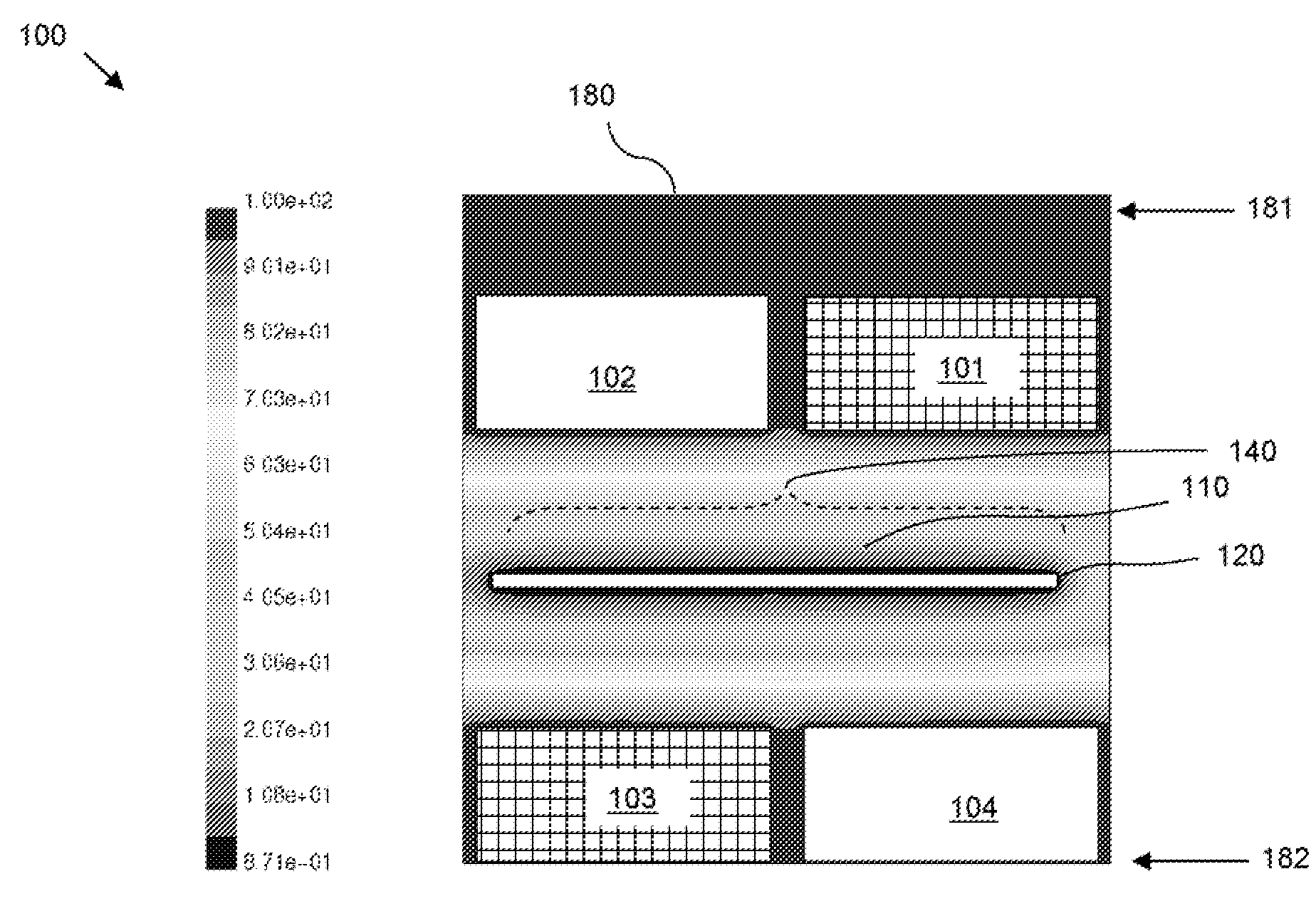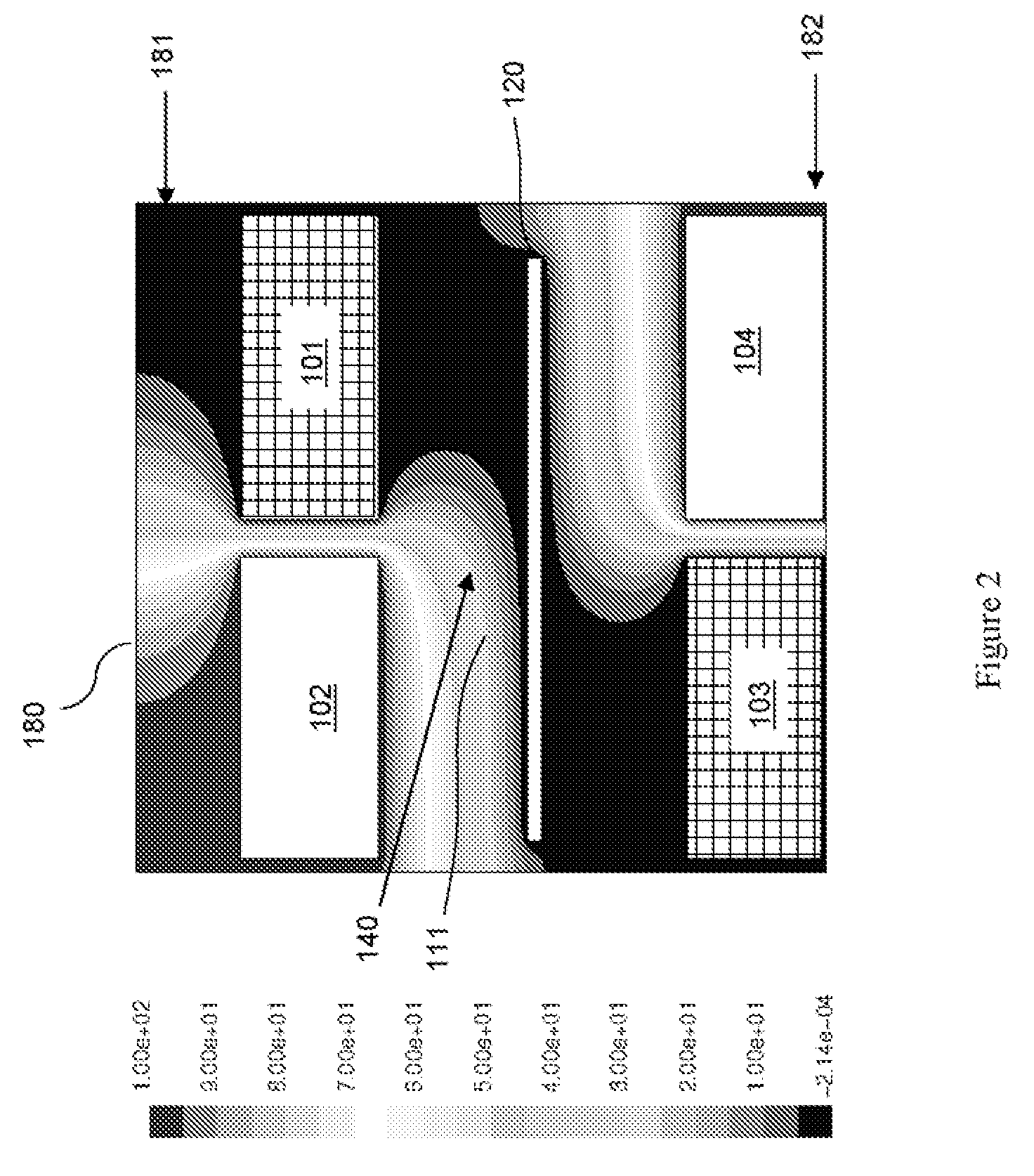Multi-anode system for uniform plating of alloys
a multi-anode system and alloy technology, applied in the field of eiectrodeposition of alloys, can solve the problems of non-uniform alloy composition and non-uniform thickness, non-uniform plating thickness of prior art methods, and basic inability to modify the alloy metal ratio
- Summary
- Abstract
- Description
- Claims
- Application Information
AI Technical Summary
Benefits of technology
Problems solved by technology
Method used
Image
Examples
embodiment 300
[0037]Specifically, FIG. 3a represents a top view of one embodiment 300 of an alloy plating system. FIG. 3b represents a cross-section view of the embodiment 300. In this embodiment, anodes in the same layer comprise the same soluble metal, but the metal type may vary from layer to layer. For example, the anode layers 50 can comprise a first anode layer 301 with at least one first anode 51 comprising a first soluble metal (e.g., nickel) and a second anode layer 302 with at least one second anode 52 comprising a second soluble metal (e.g., cobalt), a third anode layer comprising at least one third anode comprising a third soluble metal, etc. The first anode layer 301 can be positioned adjacent to a first wall 81 of the container 80 and the second anode layer 302 can be positioned adjacent to the first anode layer 301 opposite the first wall 21 of the workpiece 20. Anodes in adjacent anode layers 301, 302 can overlap. For example, the anodes in each layer can be spaced apart at predet...
embodiment 800
[0044]FIG. 8a represents another embodiment 800 of an alloy plating system. In this embodiment 800 each of the anode layers 50 can comprise a plurality of multi-anode structures 855. Each multi-anode structure can comprise at least two different anodes comprising different types of soluble metals. Specifically, each multi-anode structure 855 can comprise a first anode 51 that comprises a first soluble metal (e.g., nickel) and that is surrounded by a second anode 52 that comprises a second soluble metal (e.g., cobalt) that is different from the first soluble metal (e.g., see shapes of exemplary multi-anode structures depicted in FIG. 8a). In this embodiment the first and second anodes 51, 52 can each comprise either non-metal or non-soluble metal (e.g., titanium) baskets or similar type containers with a plurality of openings (e.g., mesh-type openings). The basket of the first anode 51 is filled with pieces (e.g., spheres) of the first soluble metal and is nested within the basket of...
PUM
| Property | Measurement | Unit |
|---|---|---|
| surface areas | aaaaa | aaaaa |
| areas | aaaaa | aaaaa |
| current density | aaaaa | aaaaa |
Abstract
Description
Claims
Application Information
 Login to View More
Login to View More - R&D
- Intellectual Property
- Life Sciences
- Materials
- Tech Scout
- Unparalleled Data Quality
- Higher Quality Content
- 60% Fewer Hallucinations
Browse by: Latest US Patents, China's latest patents, Technical Efficacy Thesaurus, Application Domain, Technology Topic, Popular Technical Reports.
© 2025 PatSnap. All rights reserved.Legal|Privacy policy|Modern Slavery Act Transparency Statement|Sitemap|About US| Contact US: help@patsnap.com



